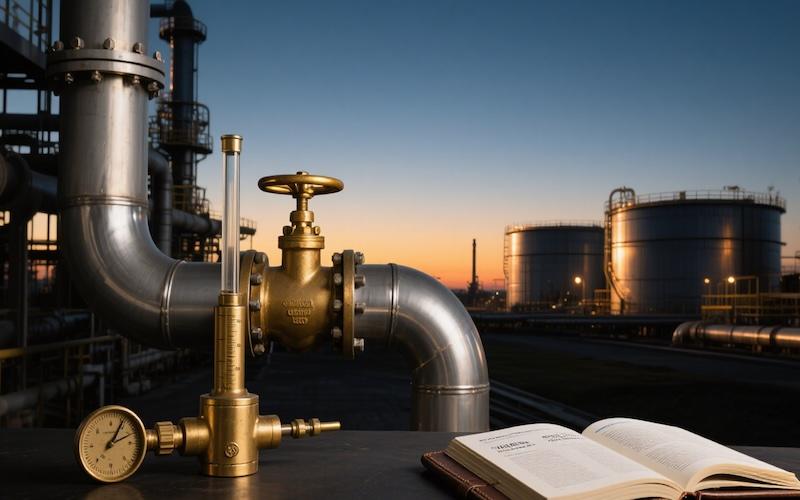Three consecutive declines! How long can the decline in US crude oil last with OPEC+ increasing production?
2025-08-04 17:23:34

OPEC+ increased production by 547,000 barrels per day in September, the latest step in accelerating its exit from the production cut agreement since April 2025 and marking a full, early reversal of the 2.2 million barrels per day cut announced for 2023. This decision was driven primarily by a desire to regain market share, particularly in response to growing competition from US shale oil production. OPEC+ believes that the current robust global economy, low inventories, and seasonally low OECD commercial inventories provide fundamental support for the production expansion. Furthermore, the UAE was allowed to increase production by approximately 2.5 million barrels per day, further reinforcing expectations of supply-side easing and contributing significantly to the downward trend in oil prices.
Balancing geopolitical risks and supply uncertainty
While OPEC+'s production increase directly increases supply, Russian oil exports pose potential risks, and India's purchases of Russian oil may be constrained by the United States. India, a major buyer of Russian crude oil, imports 1.75 million barrels per day (bpd) from Russia, accounting for 35% of its total imports. India has stated that it will continue to honor its long-term contracts and will not halt purchases due to US threats. This stance has eased market concerns about supply disruptions and limited the decline in oil prices, but it has failed to reverse the downward trend. However, further US sanctions on Iran and Russia remain a potential upside risk, though they have not yet posed a concrete impact.
The game between economic policies and demand expectations
The Trump administration's tariff policy is exerting dual pressure on oil prices: First, direct tariffs could dampen global economic growth and, in turn, oil demand; second, the US has threatened to impose a 100% secondary tariff on buyers of Russian crude oil, attempting to de-escalate tensions in Ukraine by limiting Russian revenue, but this has been limited in its effectiveness by resistance from countries like India. Goldman Sachs and other institutions have noted that a weakening US economy could exacerbate downside risks to demand. Last Friday's non-farm payroll data was below expectations, while OPEC+'s production increases have further exacerbated expectations of a future oversupply, intensifying downward pressure on oil prices.
Short term: supply increase leads to price decline
OPEC+'s decision to increase production directly led to a further decline in oil prices on Monday (Brent crude fell 0.28% to $69.23 per barrel, and WTI fell 0.46% to $67.01 per barrel), extending the decline from last Friday. Market expectations of oversupply reinforced bearish sentiment, particularly as the UAE's additional production increase (accounting for 2.4% of global demand) further amplified the signal of easing supply. However, India's announcement to continue purchasing Russian crude oil partially offset the impact, limiting the decline in oil prices and failing to change the dominant short-term downward trend.
Medium term: supply and demand game and policy risks are intertwined
On the supply side, OPEC+'s production increase plan may be suspended after September, as Goldman Sachs expects OECD inventories to accumulate faster and seasonal demand support to fade. However, if US shale oil production is forced to cut production at break-even points due to low oil prices, OPEC+ may adjust its strategy and even consider further releasing the remaining 1.66 million barrels per day of production capacity, which will continue to suppress oil prices.
On the demand side, US tariffs and the risk of an economic recession pose the primary downward pressure. Goldman Sachs forecasts Brent prices to average $64 per barrel in the fourth quarter of 2025, falling to $56 per barrel in 2026, based in part on its assumption of slowing demand growth. However, if demand in emerging markets such as India proves more resilient than expected, or if escalating geopolitical conflicts lead to supply disruptions, oil prices could experience a short-term rebound, but this would be unlikely to reverse the medium-term weakening trend.
Long term: market share competition and structural overcapacity
OPEC+'s production increase strategy aims to reshape the global oil landscape by squeezing out high-cost producers, such as US shale oil, through low prices. Due to tariffs driving up equipment prices and rising costs, coupled with low oil prices, US shale oil companies have cut capital expenditures, resulting in a decline in the number of active drilling rigs and a slowdown in production growth. This strategic maneuver is likely to keep oil prices in a low range for a long time, placing significant long-term downward pressure. OPEC+'s internal unity and coordination between Saudi Arabia and the UAE will be key to implementing this policy.
Goldman Sachs maintained its oil price forecast but warned of risks, believing that OPEC+ policies are flexible, but US tariffs and economic weakness may exacerbate downward demand and further consolidate downward pressure on oil prices.
ING: If India stops purchasing Russian crude oil (affecting 1.7 million barrels/day), it may eliminate the supply glut in 2024-2026, but the probability of this scenario is low, which means that the oversupply pattern is difficult to change.
Galaxy Securities: Forward inventory accumulation expectations limit the upward height of oil prices. Brent crude oil is expected to fluctuate in the range of US$68-72 per barrel, highlighting its weak volatility characteristics.
Summarize
OPEC+'s proactive production expansion to gain market share, coupled with US tariffs suppressing demand, has combined to push oil prices downward. While geopolitical risks and resilient purchasing from countries like India are providing some support, the impact is limited. In the short term, rising supply will dominate price trends. In the medium term, downward pressure will remain a key factor, driven by OPEC+ policy adjustments and US economic data. In the long term, the outcome of the negotiation between OPEC+ and US shale oil production will likely lead to a volatile, weak market with downward pressure dominating.

(US crude oil daily chart: Source: Yihuitong)
At 17:17 Beijing time, U.S. crude oil was trading at $66.59 per barrel.
- Risk Warning and Disclaimer
- The market involves risk, and trading may not be suitable for all investors. This article is for reference only and does not constitute personal investment advice, nor does it take into account certain users’ specific investment objectives, financial situation, or other needs. Any investment decisions made based on this information are at your own risk.





















